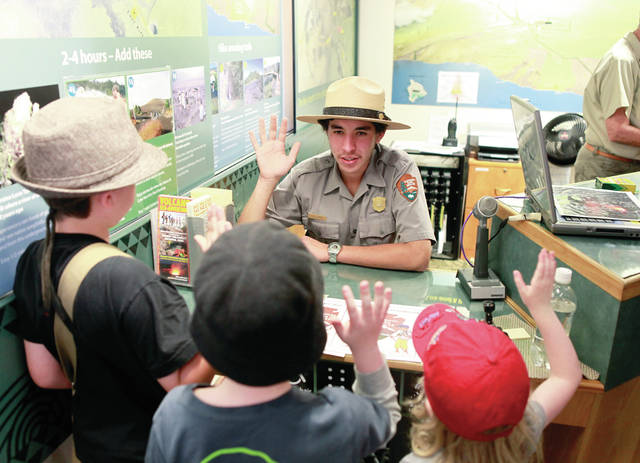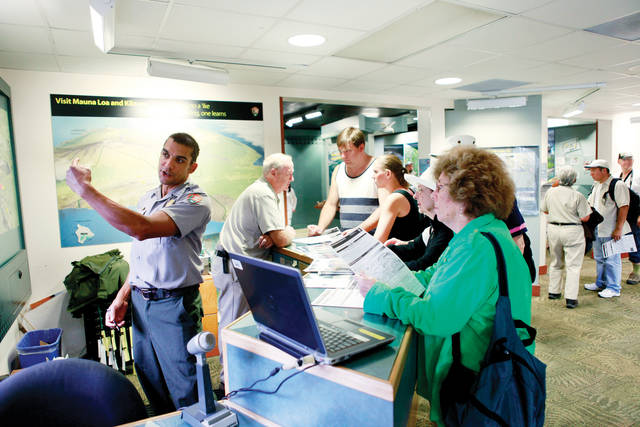HILO — While Hawaii Volcanoes National Park reopens Saturday, visitors might find it hard to park.
Among the list of facilities not available at the park’s reopening this weekend are approximately one-third of the park’s roughly 500 parking spaces, said Ben Hayes, chief of interpretation for the park. Jaggar Museum and its associated parking lot are currently unusable due to structural damage caused by repeated tremors during the Kilauea eruption.
With a high amount of visitor traffic expected at the reopening of the park — which closed more than four months ago — visitors are advised to expect long lines and long waits.
Hayes said visitors should be prepared to seek parking places at different lots within the park, such as at Mauna Ulu or further down Chain of Craters Road.
With potable water not available within the park, visitors are also advised to bring water and food with them in case of long waits.
Because of the anticipated wait times, Hayes said the park will not show its typical films at the Kilauea Visitor Center, which run for 30 minutes, in order to get visitors through the center more quickly.
In addition to the lack of parking, visitors also will see less of the park itself.
Park officials were able to reopen every building, trail and road they intended to when they first announced the park’s reopening. That list includes 14 roads and trails — several of which are restricted only to bicycle or pedestrian traffic — the Kilauea Visitor Center, the park bookstore, parts of the Volcano House hotel and the Kilauea Military Camp, although the latter is only accessible to those with a military ID.
Many trails and roads remain closed due to possible earthquake damage. A team from the Federal Highway Administration assessed park roads last week to determine whether they will be eligible for assistance from the administration’s Emergency Relief for Federally Owned Roads program.
“It’s a first step in the process — and it is a process,” Hayes said, explaining that assessments have given park officials a thorough overview of areas of concern and what it will take to repair them.
In addition to the roads, many trails are inaccessible. Hayes said that some trails have been paved with asphalt to be more accessible to visitors with disabilities, which might conceal potentially dangerous cracks or sinkholes. Some of the opened trails might have additional added infrastructure, such as concrete slab bridges over cracks.
“We want to make sure every part of the park is safe and won’t give way before we open it to the public,” Hayes said.
The park will also issue notices to all visitors with recommendations for avoiding potential hazards. These recommendations include staying away from cracks, sinkholes and cliff edges, staying on open roads and trails, and wearing sturdy shoes and long pants to protect against falls upon jagged lava rock.
Email Michael Brestovansky at mbrestovansky@hawaiitribune-herald.com







Sounds like the fee to get in should be reduced??
Good thing I have a pass. Do you think mid-week will be less crowded?
No parking, part of the park still not available, how could it not be crowded?
Tourists will have to park in remote lots and actually walk. Oh, the humanity!
HOORAH!!!!…. we are getting our Back Yard back……sadly the Halemaumau Lake is no more.
This is going to be a glorious occasion.
Thank you ALL for making it happen today!